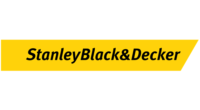The Metal Construction Association (MCA), expanding the use of metal in construction through marketing, technology, and education, has recently taken steps to make architects, architectural students, universities, and builders more aware of benefits of insulated metal panels (IMP), a type of paneling that will be known for its efficiency, high performance, reduced erection time and coordination, thermal performance, and aesthetics.
First, insulated metal panels are installed outboard of a metal stud cavity or other support system, minimizing thermal short circuits. Secondly, the panels incorporate a metal air and vapor barrier, eliminating other materials and construction trade coordination. Third, insulated metal panels provide highly efficient insulation in a small space. Fourth, the panels also provide a metal aesthetic exterior in a variety of sizes shapes, and colors. Superior thermal performance of insulated metal panels shadows standard wall construction practices and how they meet current and pending thermal code guidelines.
“Architects and contractors need to know, not only about the IMP, but also about the limitations of current wall construction methods, new thermal codes requirements, and how to build a quality exterior metal wall system,” said Scott Kriner, MCA spokesperson.
Recognition by the American Society of Heating, Refrigerating, and Air-Conditioning Engineers (ASHRAE) of the shortcomings of insulated metal stud cavities, along with increased thermal performance requirements, has illuminated IMP as a uniquely efficient solution.
“Insulated metal panels have been manufactured for over 30 years, yet unlike other construction materials, knowledge of the benefits and uses of this product are limited in the architectural community,” remarked Kriner. “Now, with new energy codes and moisture control concerns, insulated metal panels provide a unique high performance solution in a compact product, eliminating other materials and reducing field labor.”
Insulated metal panels were one of the first exterior wall systems to install insulation outside of the support system without compromising thermal performance. Now, other systems are attempting to find similar answers, but must contend with various trades, insulation material efficiency, thermal short circuits and fire code acceptance. Currently, IMP systems are one of the few that meet all the performance criteria with minimal compromising.
For more information, visit www.metalconstruction.org.
Related Articles
×
Get our new eMagazine delivered to your inbox every month.
Stay in the know on the latest in the wall and ceiling industry.
SUBSCRIBE NOWCopyright ©2024. All Rights Reserved BNP Media.
Design, CMS, Hosting & Web Development :: ePublishing



Report Abusive Comment